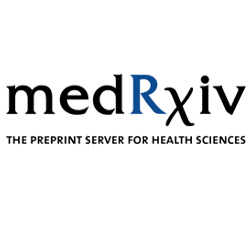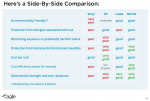Page 1 of 2
Is it just me or does the presentation of
varicella-zoster virus closely resemble MPX
View: https://twitter.com/Is2021OverYet/status/1555929181690728450
Real-world evidence from over one million COVID-19 vaccinations is consistent with reactivation of the varicella-zoster virus
M. Hertel,
M. Heiland,
S. Nahles,
M. von Laffert,
C. Mura,
P.E. Bourne,
R. Preissner,
S. Preissner
First published: 26 April 2022
https://doi.org/10.1111/jdv.18184
Citations:
1
Funding sources
This work was supported by the Deutsche Forschungsgemeinschaft (TRR295 and KFO339).
Conflicts of interest
The authors declare that they have no conflicts of interest.
SECTIONS
 PDF
TOOLS
PDF
TOOLS
SHARE
Abstract
Background
Reactivation of the varicella-zoster virus (VZV), which causes herpes zoster (HZ, synonym: shingles) in humans, can be a rare adverse reaction to vaccines. Recently, reports of cases after COVID-19 vaccination have arisen.
Objectives
The aim of this study was to assess whether the frequency of HZ is found to increase after COVID-19 vaccination in a large cohort, based on real-world data. As a hypothesis, the incidence of HZ was assumed to be significantly higher in subjects who received a COVID-19 vaccine (Cohort I) vs. unvaccinated individuals (Cohort II).
Methods
The initial cohorts of 1 095 086 vaccinated and 16 966 018 unvaccinated patients were retrieved from the TriNetX database and were matched on age and gender in order to mitigate confounder bias.
Results
After matching, each cohort accounted for 1 095 086 patients. For the vaccinated group (Cohort I), 2204 subjects developed HZ within 60 days of COVID-19 vaccination, while among Cohort II, 1223 patients were diagnosed with HZ within 60 days after having visited the clinic for any other reason (i.e. not vaccination). The risk of developing shingles was calculated as 0.20% and 0.11% for cohort I and cohort II, respectively. The difference was statistically highly significant (
P < 0.0001; log-rank test). The risk ratio and odds ratio were 1.802 (95% confidence interval [CI] = 1.680; 1.932) and 1.804 (95% CI = 1.682; 1.934).
Conclusions
Consistent with the hypothesis, a higher incidence of HZ was statistically detectable post-COVID-19 vaccine. Accordingly, the eruption of HZ may be a rare adverse drug reaction to COVID-19 vaccines. Even though the molecular basis of VZV reactivation remains murky, temporary compromising of VZV-specific T-cell-mediated immunity may play a mechanistic role in post-vaccination pathogenesis of HZ. Note that VZV reactivation is a well-established phenomenon both with infections and with other vaccines (i.e. this adverse event is not COVID-19-specific).
Introduction
Coronavirus disease 2019 (COVID-19), caused by infection with severe acute respiratory syndrome coronavirus 2 (SARS-CoV-2), rapidly became a pandemic, starting from the identification of the first cases. Globally, immense hope rests upon vaccination against COVID-19. Most available vaccines act by presenting the viral spike (S) protein to the host immune system, yielding an active immunization by the induction of a specific humoral response, followed by the formation of neutralizing anti-viral antibodies. The sera contain either (i) S protein-encoding mRNA embedded in lipid nanoparticles (LNPs), for example BioNTech/Pfizer's BNT162b2 or Moderna's mRNA-1273; (ii) adenovirus vectors, such as Astra-Zeneca's ChAdOx1 nCoV-19, Johnson & Johnson's Ad26.COV2.S or Gam-COVID-19-Vac (Gamaleya National Centre of Epidemiology and Microbiology); or (iii) inactivated SARS-CoV-2 virions, as in Sinovac's CoronaVac. A broad spectrum of clinical studies conducted in different countries has shown high protection levels against COVID-19, especially as regards severe courses of the disease. Safety profiles were found to be acceptable despite the occurrence of minor adverse effects such as muscle aches (myalgia), fatigue and other flu-like symptoms.
1-
10 Nevertheless, reports have recently emerged of very rare but severe adverse drug reactions (ADR) and adverse drug events (ADE). Specifically, eosinophilic lung disease, cerebral venous sinus thrombosis (CVST), pulmonary embolism, vaccine-induced immune thrombocytopenia (VITT) and myocarditis were found to be associated with COVID-19 vaccination.
11-
18
Because of the rapidity with which the first generation of COVID-19 vaccines had to be developed, tested, produced, delivered and finally utilized, there is an acute need to screen vaccinated cohorts for as yet unknown adverse reactions and undesirable effects; such data are also indispensable in continually refining next-generation vaccines. Although any scientific report of risks or complications can be misconstrued (the present work included), for example as part of anti-vaccine agendas, we believe that it is of fundamental ethical relevance that potential ADRs/ADEs are meticulously investigated and disclosed to the public. Note that many adverse events are known to occur both with infections (e.g. COVID-19 itself) and, in some cases, even with other (non-COVID) vaccines: that is, these adverse events are not necessarily specific side-effects of the various COVID vaccines. Any decision-making process—be it a population-wide policy recommendation or an individual/personal choice—is healthiest if it is balanced and data-informed, weighing the potential complications reported herein against the significant and well-established benefits of COVID-19 vaccination.
19
Herpes zoster (HZ, synonym: shingles) is an infectious mucocutaneous disease caused by reactivation of the varicella-zoster virus (VZV). The initial infection, often contracted in childhood, emerges as a maculopapular rash (varicella, synonym: chickenpox). Despite clinical recovery, VZV persists in the bodies of neural cells located in the spinal dorsal root ganglia and the trigeminal ganglia.
20 Typically, shingles presents as a painful unilateral cutaneous or mucous rash consisting of confluent erosions following the formation of vesicles. The exanthema/enanthema typically corresponds to a dermatome or the innervation area of a sensory nerve. HZ is primarily diagnosed clinically and can be confirmed via polymerase chain reaction (PCR) and enzyme-linked immunosorbent assays (ELISA).
21 Herpes zoster can be treated with a family of nucleoside analogue compounds (aciclovir, valaciclovir and famciclovir) that inhibit the viral DNA polymerase. These virostatic agents require prompt administration, ideally within 72 h of onset of the rash. Furthermore, a VZV vaccine is available.
20
Reactivation of herpesviridae, including VZV, has been reported to be potentially triggered by vaccines against,
inter alia, yellow fever, hepatitis A, rabies and influenza.
22 An association of HZ with COVID-19 vaccination has been reported worldwide in case reports and case series,
23-
35 as well as in a retrospective study focusing on the safety of BNT162b2. The latter found a risk ratio (RR) of 1.43 based on 15.8 events of HZ per 100.000 patients.
36 Iwanaga
et al. published a narrative review on 399 patients who developed shingles after COVID-19 vaccination including two cases of oral HZ. Among those, 24 individuals reported a history of varicella/HZ. Twenty subjects had been vaccinated against VZV. BNT162b2 was most often associated with HZ.
37 Fathy
et al. reviewed 35 cases of HZ after COVID-19 vaccination reported in the International Dermatology Registry. Shingles occurred in similar proportions after the use of BNT162b2 and mRNA-1273.
38
Even though HZ can be sufficiently treated by prompt administration of nucleoside analogues, severe complications can occur. Of those, the most frequent ones are secondary infections, the development of subacute herpetic neuralgia and post-herpetic neuralgia, as well as zoster ophthalmicus including acute retinal necrosis, which can cause loss of vision.
20 Rather rare potential neurological complications are Hunt syndrome, Guillain–Barré syndrome, Bell's palsy, aseptic meningitis, peripheral motor neuropathy and myelitis.
45 Furthermore, VZV is known to increase maternal morbidity in pregnant individuals.
21
The present work seeks to determine whether an association between COVID-19 vaccination and the eruption of herpes zoster can be found in a large international cohort, based on statistical analysis of real-world data. As a working hypothesis, we assumed that the incidence of HZ would be significantly (detectably) higher in individuals who were vaccinated against COVID-19, vs. those who remained unvaccinated. To gather subject data, the TriNetX Global Health Research Network was used. This database offers high volumes of real-world data aggregated from multiple centres; as of November 2021, TriNetX includes medical records of over 250 million individuals. The clinical data in the TriNetX biomedical research network are drawn from over 120 healthcare organizations (HCO) across 19 countries; it brings together HCOs, contract research sites and biopharmaceutical companies in order to exchange longitudinal clinical data and provide state-of-the-art analytics. The TriNetX resource was used recently for retrospective, real-world evidence (RWE) studies of other COVID-19-related topics.
39,
40 Herein, we describe our findings for shingle-associated reactivation of VZV, based on a statistical survey of over 1 M COVID-19 vaccinations.
Materials and methods
Inclusion and exclusion criteria
The TriNetX database was accessed on 25 November 2021, and the eligibility period was limited to 2y backwards from the access date. Thus, all patients who visited the respective HCO for evaluation and management services in this timeframe were eligible for inclusion. Subsequently, to construct the initial cohorts, the database was searched for (i) individuals who had received at least one intramuscular injection of mRNA LNP or adenovirus vector-based COVID-19 vaccine (giving Cohort I), and (ii) those who were not vaccinated against COVID-19 (giving Cohort II).
Matching process
In order to mitigate confounder bias via the method of propensity score matching, stratified and balanced sub-cohorts across current age and gender distributions were constructed from the initial cohorts, as shown in Fig.
1. One-to-one matching was conducted to replicate randomized conditions as closely as possible.





